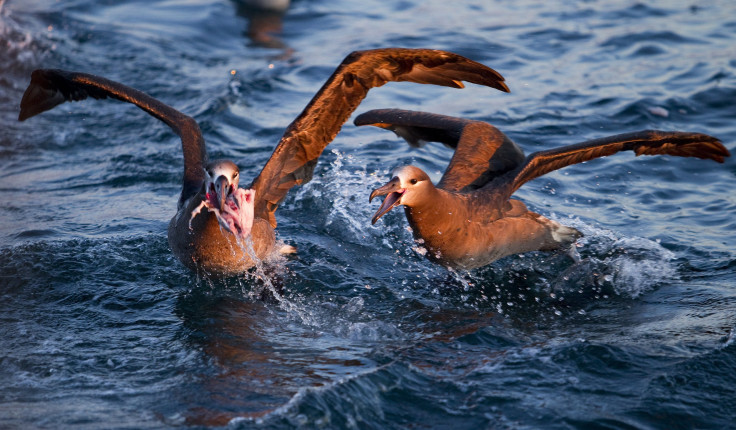Seabirds Eat Floating Plastic Because It Smells Like Food, Study Reveals

Over 5 trillion pieces of plastic — collectively weighing nearly 270,000 tons — are currently floating in the world’s oceans. Plastic pollution is so rampant that roughly 90 percent of seabirds have, at some point in their life, swallowed plastic, risking their health and life.
A new study has now provided insights into why seabirds such as albatross make the mistake of swallowing plastic in the first place. According to the study, published Wednesday in the journal Science Advances, marine plastic flotsam gives off smell that these birds associate with food — something that tricks them into ingesting plastic waste.
“It’s important to consider the organism’s point of view in questions like this,” lead author Matthew Savoca from the University of California, Davis, said in a statement. “Animals usually have a reason for the decisions they make. If we want to truly understand why animals are eating plastic in the ocean, we have to think about how animals find food.”
In order to understand this, the researchers put beads made of the three most common types of plastic debris — high-density polyethylene, low-density polyethylene, and poly-propylene — into the ocean at Monterey Bay and Bodega Bay, off the California coast. These beads, which were placed inside mesh bags and tied to an ocean buoy, were collected three weeks later.
After analyzing the plastic, they found that it reeked of dimethyl sulfide (DMS) — a compound that is normally produced when algae is eaten by animals like krill, which is one of the birds’ favorite meals. In this case, however, the smell was released by algae that coated the floating plastic.
Tube-nosed seabirds such as petrels and albatross, who have a keen sense of smell that they use to hunt, are attracted to this odor — which, as the researchers put it, is the birds’ version of a “dinner bell.”
The researchers, after studying 25 species of seabirds, found that birds that track the scent of DMS to find prey were nearly six times more likely to eat plastic than those that did not.
“This study shows that species that don’t receive lot of attention, like petrels and some species of shearwaters, are likely to be impacted by plastic ingestion,” study co-author Gabrielle Nevitt, also from the University of California, Davis, said in the statement. “These species nest in underground burrows, which are hard to study, so they are often overlooked. Yet, based on their foraging strategy, this study shows they’re actually consuming a lot of plastic and are particularly vulnerable to marine debris.”
© Copyright IBTimes 2024. All rights reserved.






















